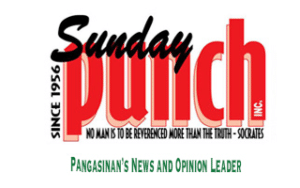Roots
Collecting on the MDGs
By Marifi Jara
Without awareness of the Millennium Development Goals (MDG), both on the part of the people and public officials, there will be no accountability in terms of keeping these promises.
Our local officials must realize that they need to deliver on what our government signed up to and the people must collect on the MDG pledges.
Tracking the numbers, as what many non-government organizations and the National Statistical Coordinating Board have been doing, is barely enough.
The numbers do not necessarily paint the real picture and the numbers can easily lie.
Take for example Goal number 1, which is to eradicate extreme poverty and hunger.
In Region 1, the percentage of the people living below the poverty line has supposedly gone down to 30.2% as of 2007 from 55.3% as of the 1990 baseline year while those below the survival level has decreased to 11.2% from 29.4% during the same period. The MDG target by 2015 is 17.8% for the poverty line and 7.6% for survival.
So in terms of tables and graphs, those are definitely impressive statistics.
But as pointed out by Professor Leonor Magtolis Briones, Co-Convenor of Social Watch Asia and Social Watch Philippines and Professor of Public Administration at the University of the Philippines’ National College of Public Administration and Governance, what is our basis for the poverty threshold?
A P40 per person per day standard?
Anyone would be too hard-pressed to live decently on that amount.
And we need to ask, have those improvements in the poverty numbers been a result of local government efforts to lay out policies and projects that stir a town or a city’s economy such that income opportunities are created for the people?
Looking at the increasing number of overseas Filipino workers from Pangasinan, it would not be hard to conclude that foreign money saves the day for many a Pangasinense, and that is mostly out of individual efforts, not prompted by any development program coming from the local government level.
The local government units now need to think within an MDG framework. Plans should be made in terms of how projects will ultimately redound to meeting the MDG targets in real and meaningful terms.
Public officials at the helm of LGUs, with help from the private sector and the community, can map out strategies that can be institutionalized so that even when there are changes in leadership during all the succeeding election years until 2015, an MDG-based blueprint for development is already in place.
Municipal and city planning officers and their staff have a major role to play here. Since they are career civil servants, they will be the constant faces in the LGUs who can serve as the vessel for continuity.
We need to start moving away from personality-based governance wherein projects are delivered in pieces without any real long-term vision that can be carried on by successors, especially if the successive leaders are not political allies.
The MDG, being a commitment we made not just to ourselves but to the world, can serve as the framework within which we can introduce consequential and continuing improvements.
(Readers may reach columnist at marifijara@gmail.com. For past columns, click http://sundaypunch.prepys.com/archives/category/opinion/roots/
For reactions to this column, click “Send MESSAGES, OPINIONS, COMMENTS” on default page.)
Share your Comments or Reactions
Powered by Facebook Comments






